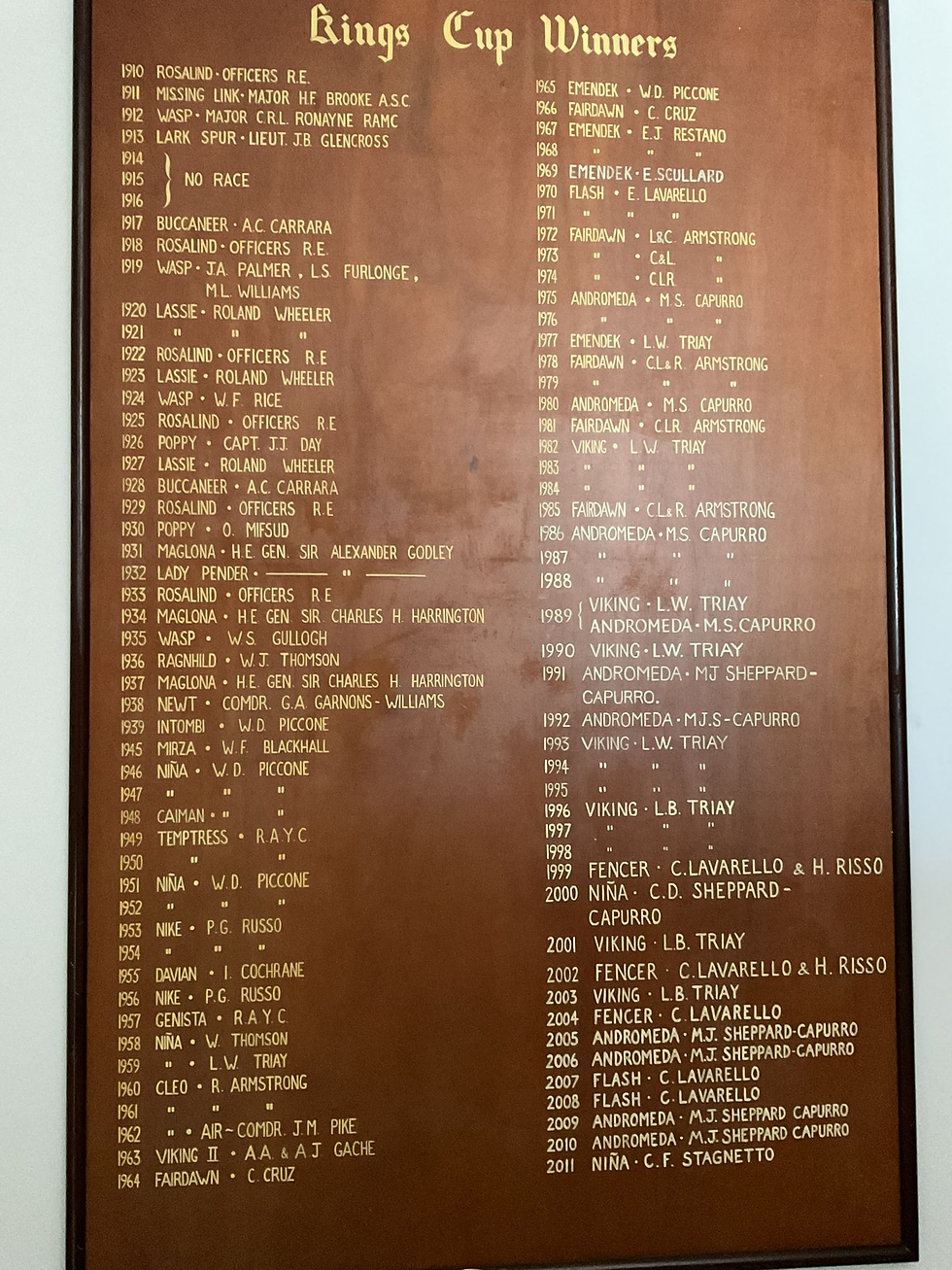The Victory Class 1934 – 1984 Z’Moya to Zinnia
- Ciara Nic Liam
- Dec 9, 2024
- 2 min read
On the Portsmouth Victory Class Website, they have a digital copy of their entire 50 Year History from 1934 through to 1984, written by Ian Mead.

The Digital Copy can be found here: https://victoryclass.org.uk/media/pdf/The_Victory_Class_1934-84.pdf
The Summary is as follows:
The Victory Class sailboat was established in 1934 in Portsmouth as a response to the need for more standardized and accessible sailing. The design originated from the 1904 Bembridge Sailing Club one-design boat, created by Alfred Westmacott, known for his innovative keelboats. The Portsmouth Harbour Racing and Sailing Association, spearheaded by J.G. Kimber, formed to foster racing and chose the Bembridge design as the Victory Class prototype.
Charles Nicholson, a prominent yacht designer, adapted the rig for the new class, ensuring affordability and suitability for Solent conditions. The boats featured a sturdy 20 ft hull with a Bermudan rig and were recognized by the Solent Classes Racing Association, assigned the sail mark "Z."
Initial racing began in June 1934, with seven boats participating. Despite challenges, the class grew to 14 boats by the season's end. Racing quickly gained popularity, with events including passage races and regattas, emphasizing camaraderie and competitiveness.
World War II paused activities, but the class revived post-war with strong leadership and community involvement. Innovations in sails, rigging, and racing rules modernized the boats, improving performance and attracting younger sailors. The use of modern materials like Terylene and nylon, and the introduction of adjustable rigs, kept the design competitive.
The Victory Class maintained a strict one-design ethos, limiting modifications to preserve fairness. Social activities, such as dinners and events during Cowes Week, fostered a close-knit community. By the 1980s, the class operated independently, managing its own facilities, including the purchase of a yard in Bath Square.
With an emphasis on accessibility and maintaining traditions, the Victory Class has been celebrated for its durability and vibrant community, remaining a cornerstone of Portsmouth’s sailing culture. The class exemplifies a balance between historical preservation and adaptability, ensuring its ongoing appeal and sustainability for future generations.




Comments